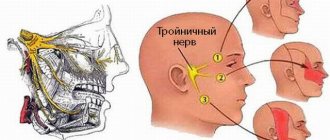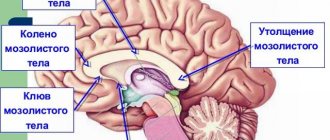The nature of neuroses is multifaceted and diverse; it is often difficult to immediately determine the type of illness. Sometimes the symptoms of a mental disorder are unusual, and it is extremely difficult to guess that these are signs of a disease. This can also be said about burning in the legs during neuroses. Tingling is also an initial symptom of many other diseases or can be caused by external factors.
It burns the whole body from the inside for a reason. Burning in the body
A burning sensation in the body does not always indicate a physiological process; it can, for example, be caused by an insect bite. However, most often this is a sign of the presence of pathology in the body. Local symptoms include irritability and decreased performance.
- A bite of an insect. At first glance, he is harmless. However, over time, severe swelling, redness, pain and itching may occur. Sometimes there is numbness and paralysis in the affected area.
- Excessive sun exposure. Irritation occurs when exposed to the sun for a long time during the period of its maximum activity.
- Exposure to aggressive substances (alkali, acid, household chemicals). Not only the epidermis is affected, but also the deeper layers of the skin. Ingestion of such substances causes a burn to the mucous membrane of the esophagus or stomach.
- Allergic reactions. In addition to burning, itching, rashes and redness of the skin are observed at the site of exposure to the provoking factor.
- Skin diseases (eczema, psoriasis, herpetic infection).
- Fungal skin infection. Burns and itches in the area where the fungal infection is located. If this is the genital area, it is worth suspecting a mycotic lesion of the vaginal mucosa or penis.
- Diseases of internal organs (diabetes, gout, vascular, thyroid pathology, jaundice).
- Nervous overstrain.
- Ulcerative lesions of the stomach and duodenum. A burning sensation appears on an empty stomach in the area where they are located.
- Helminthiases.
Causes of burning in the body
A burning sensation in the body does not always indicate a physiological process; it can, for example, be caused by an insect bite. However, most often this is a sign of the presence of pathology in the body. Local symptoms include irritability and decreased performance.
In most cases, burning in combination with other symptoms is a clinical manifestation of an allergic reaction, mycotic infection, helminthiasis and other diseases.
Below is a complete list of reasons that provoke the appearance of the symptom.
To find out the cause of the symptom in question, you need to contact a dermatologist, gynecologist, urologist, gastroenterologist, infectious disease specialist or endocrinologist.
Diagnosis of burning sensation in the body
Diagnosis begins with a microscopic examination of smears from the affected areas. If the burning sensation is localized in the internal organs, fibrogastroduodenoscopy, allergy tests are performed, hormonal levels are examined, and in case of helminthiasis, urine and feces are analyzed.
If discomfort is observed in the groin area, a gynecological or urological examination is required, followed by a cytological analysis of smears.
Treatment
Having established the cause of the symptom, the doctor prescribes hormonal, antihistamine, antiviral or antimycotic drugs. When a gastric ulcer is detected, proton pump blockers, H2 histamine receptor blockers, antacids and bismuth preparations are used.
If it is necessary to restore parts of the digestive tract after a burn, consultation with a surgeon is required.
Independent selection of drugs is strictly not recommended, since the exact dosage is determined based on the results of the examination, taking into account the patient’s age and the presence of concomitant pathology.
Hot flashes with VSD
Often internal heat in the body, when there is no temperature, occurs with vegetative-vascular dystonia.
This diagnosis is quite common and at the same time the most difficult, because VSD is not an independent disease. Dystonia is a syndrome that can include many different symptoms. The presence of VSD in a patient can only be determined by exclusion, after a lengthy diagnosis and confirmation of the absence of other pathologies that explain the symptoms.
The causes of fever without fever in patients suffering from this syndrome are hidden:
- in violation of the regulatory function of blood vessels;
- in vasomotor disorders.
The feeling of increased internal temperature and sweating occurs only during hot flashes, but attacks are a secondary pathology. The underlying factors in the development of the problem may be related to:
- genetic predisposition;
- hormonal changes in the body;
- frequent exposure to stressful situations;
- neurotic disorders;
- alcohol abuse, smoking.
Other symptoms of vegetative-vascular dystonia: pain or discomfort near the heart, disruption of the rhythm of its work, significant fluctuations in blood pressure. It may also be disorders of the digestive tract, biliary system, mood swings, feeling of a lump in the throat, spasms, cramps of the limbs. Sometimes patients suffer from a feeling of cold hands, feet, vestibular disorders and dizziness.
The heat wave that occurs with vegetative-vascular dystonia is a consequence of the resulting pathology. For treatment, the doctor will suggest stopping manifestations that contribute to disruption of daily activities and a decrease in quality of life. Preventing fever is simply impossible without following the rules of a healthy lifestyle, a rational diet, and regular physical exercise.
If a fever appears without an increase in general temperature, you must definitely consult a therapist, he will:
- will help determine the nature of the violation;
- will refer you for further diagnostics;
- will select adequate treatment.
If necessary, you should consult a specialist doctor, for example, a cardiologist, gynecologist, or psychotherapist.
Burning skin without external manifestations. Possible violations
The manifestation of burning skin can be observed in various areas of the body. In this case, this symptom may be the first manifestation of a certain disease. After all, it is the external manifestations that occur on the surface of the skin that are often diagnosed as symptoms of some serious disorders in the internal organs, which can then only worsen with insufficient attention.
External reasons
The occurrence of burning skin caused by external causes usually manifests itself clearly immediately and the cause of its occurrence can be easily identified.
- For example, with insect bites, a burning sensation begins to appear immediately after the bite, with the greatest intensity noted in the first minutes after the bite.
- With a sun or thermal burn, the burning sensation also manifests itself quite sharply, pain is noted within a short time after this effect is applied.
- Also the impact of aggressive substances, for example, household chemicals, when the active substances of the drugs affect skin that is sensitive to them. The burning sensation in this case should be considered an external manifestation, which reaches its greatest intensity in the first minutes after exposure.
There are also a number of internal pathologies in which burning skin is one of the very first symptoms of the current disease.
Internal pathologies
So, burning of the upper layer of the epidermis may indicate the following internal diseases of the body:
- vascular lesions - with this pathology, there is periodic swelling of the extremities, their cold state, and a burning sensation of the skin at the site of the lesion is often felt. When a burning sensation occurs, the cause of this condition should be identified in order to determine the root cause of the burning sensation and methods for stabilizing the condition;
- liver diseases - since the liver is the main cleansing organ of our body, the condition of the skin, as well as the general well-being of a person, largely depends on its condition. And such manifestations as sharply dark color of urine, lightening of feces, as well as a pronounced burning sensation in certain areas of the skin can accompany pathologies in the functioning of this organ. The cause of burning in liver damage is the release of bile salts into the blood, which, acting on skin receptors, irritate them and this leads to a pathological reaction;
- skin diseases - eczema, psoriasis, allergies, erythema may be accompanied by a burning sensation of the skin. With these skin lesions, additional external manifestations are noted, which also attract attention and require immediate assistance;
- internal parasites - it is helminths that in some cases cause severe burning of the skin, therefore regular preventive cleansing of the body will help avoid this condition;
- decreased activity of the thyroid gland - with this pathology, there is a constant burning sensation of the skin, it becomes hot and moist, the activity of the functioning of some body systems decreases, which causes increased fatigue and a tendency to depression, since it is the thyroid gland that is responsible for the process of producing hormones, and hormonal levels in many respects is responsible for the mental and psychological state of a person.
Treatment of glossalgia: main goals
If a burning sensation occurs in the mouth, regardless of the cause of its development, doctors sanitize all surfaces. This allows you to disinfect the oral cavity from infectious lesions and reduce the inflammatory process.
Then the patient is sent to the dentist for an examination of dentures, fillings, and tartar. If there are violations, they are corrected. It may be necessary to form a normal bite.
We suggest you read How to deal with bad breath: frequent bad breath
At the same time, the patient must undergo examination by different specialists. He is sent to the office of a gastroenterologist, endocrinologist, neurologist, etc.
Pathological treatment of glossalgia is aimed at restoring homeostasis. Without influencing the ANS and the main cause of pain, it will not be possible to eliminate the symptoms. Patients are usually prescribed medications:
- Phenazepam, Diazepam, Pilocarpine increase salivation;
- Sedatives to eliminate vegetative symptoms of psychosomatic origin (valerian, motherwort, Novopassit);
- Vitamin B (injections), ATP are needed to stimulate tissue metabolism;
- Iron-containing substances (Gemostimulin, Ferrocal);
- Euffilin, nicotinic acid improve blood circulation in the brain;
- Bromine preparations, Phenibut, Amitriptyline normalize the tone of the NS (their use should be long-term - up to 2 months);
- Lingual nerve blocks;
- Local anesthetics that relieve unpleasant symptoms (Anestezin, Citral liquid, Trimecaine, rosehip oil with vitamin A).
Additionally, it is recommended to carry out physical procedures and reflexology. Suspicious patients should definitely visit a psychologist. They may require hypnosis therapy.
Glossitis of the tongue These are the main prerequisites for the manifestation of the symptom. One is of an infectious nature, the other is associated with internal processes in the body.
Glossitis is an acute inflammation of tissues associated with the presence of a source of infection in the oral cavity. The tongue becomes red and swollen, salivation becomes abundant, taste sensations and clarity of speech are lost. It is difficult for a person to chew food, fever and enlarged lymph nodes are possible.
With glossalgia, a “burning” tongue may outwardly look completely healthy. Or maybe change your appearance. The disease is not of an infectious nature, but of an immunological nature: it is associated with a general weakening of the body due to internal diseases, lack of vitamins and other phenomena.
"Geographical language"
With both pathologies, one cannot help but notice redness, epithelial detachment, pustules and other unpleasant phenomena:
- “Geographical tongue” (desquamative glossitis). It looks like vaguely shaped areas with dead epithelium, due to the painful detachment of which a person feels the tongue tingling or burning.
- Folded tongue. This is usually a deep longitudinal furrow right in the center and symmetrical lateral branches. The folded areas are sensitive, easily irritated and can become a breeding ground for candidiasis and other infectious diseases.
- Plaques and papules. When they open, they release purulent contents. In addition, they create severe discomfort in the mouth.
- Minor wounds, scratches. Associated with injury from teeth or hard food.
If everything is clear with the signs of injury, then the reasons for the formation of other phenomena need to be understood in detail. To understand why your tongue bakes and what to do about it, it is better to immediately contact a dental clinic.
Burning skin with neurosis. Skin neurosis: symptoms and treatment
For advertising purposes:
The skin on your legs becomes numb, a sensation of itching and burning appears, but you cannot explain all these phenomena? Often the appearance of such signs indicates neurosis. They can be provoked not only by constant stress, but also by conflict situations. In the genesis of such a problem lies a psychological problem, but not a serious illness of the body.
Causes of the disease
Why does a person begin to experience a range of skin disorders? Doctors say that the reason for this may be a number of factors favorable to the disease. This rightly includes various brain injuries, hormonal imbalances (especially typical in adolescence), infections and chronic diseases, physical exhaustion of the body, caused, among other things, by improperly structured nutrition.
But to a greater extent, the cause of skin neurosis is psychological problems. This includes constant mental overstrain, stress, heavy physical activity, anxiety, conflict situations or quarrels of various kinds. Chronic lack of sleep often aggravates the situation, as well as if a person does not have the opportunity to rest enough time.
In childhood, the cause of the disorder can be the behavior of adults, an unstable environment and quarrels. Early psychotherapy and a change of environment help greatly in this case. Without proper attention, the disease can worsen significantly.
Symptoms of neurosis
With skin neurosis, all symptoms can be divided into several main groups:
- Associated with sensory disturbances. It is equally possible to decrease it or increase it. With hyperesthesia, the skin becomes irritated even upon contact with tissue or various objects. This symptom appears especially often in the presence of concomitant pathologies of the back.
- Decreased skin sensitivity may indicate an inability to feel pain or any discomfort. This already indicates the presence of malfunctions in the functioning of nerve endings, as well as the nervous system of the brain.
- Movement disorders, when the skin on the legs becomes numb and a feeling of tightness appears.
- Psychogenic itching. It can spread both to a specific area and to the entire body. It usually occurs after experiences or stress.
- Dryness or, on the contrary, moisture of the cover.
- Different types of angioneurosis. In this case, both pale and cyanotic features may appear with equal probability.
- Sometimes tactile hallucinations are possible, that is, moments when the patient feels not only the friction of clothing, but also goosebumps, insects crawling, and sometimes even their bites. In this case, a person is often busy with constant washing and washing. Such manifestations are associated precisely with the psychogenic nature of the appearance.
Hot flashes during the premenstrual period
It should immediately be noted that the causes of internal heat without an increase in body temperature, which occur during the premenstrual period, have not been fully studied.
But there is a clear connection between this condition and emotional lability. Doctors often consider fever and sweating as a vegetative-vascular disorder.
There is no treatment that could completely eliminate the manifestation of PMS. Instead, doctors can offer complex regimens that are used depending on the presence of symptoms and their severity. Usually used:
- physical therapy classes;
- adjustment of rest and work schedules;
- psychotherapy.
As for medications, the use of combined oral contraceptives, antihistamines, diuretics, vitamins A, B, C, nootropics, antidepressants, and tranquilizers is indicated.
To partially relieve symptoms, and pain in particular, you should take non-steroidal anti-inflammatory drugs. They are prescribed in courses, depending on the patient’s age and body characteristics.
Burns in different parts of the body. Skin diseases
Skin diseases are often accompanied by a burning sensation, but in this case other symptoms should most often be present: unpleasant odor, the formation of ulcers, suppuration, the appearance of rashes or blisters, redness, seborrhea.
- Xerosis. These are diseases caused by hyposecretion of the sebaceous glands. Because of this, the natural protection of the skin is disrupted and its susceptibility to external irritants increases. When sick, the skin becomes rough, dry, and its elasticity decreases.
- Keratosis. A number of skin diseases accompanied by severe hardening of the skin reduce its elasticity. During the disease, there is a violation of the natural cleansing of the skin, which causes severe peeling and separation of whitish skin scales.
- Lichen. Various forms of lichen can cause a tingling or burning sensation. Typically, with this disease, a small red rash appears on the skin, often blistering. Gradually the rash covers the surface of the entire body. In areas of the skin affected by lichen, hair falls out. The disease is transmitted by contact from animals or humans, through hygiene items. Ringworms have a viral or fungal form, so self-treatment without diagnosis will only worsen the situation.
Attention! Ringworm is a contagious disease that requires immediate treatment.
- Rosacea. A chronic disease, the symptoms of which are the appearance of red spots, tissue swelling, the appearance of papules and pustules. With this skin disease, a burning sensation accompanied by a feeling of warmth is possible. Often the condition is aggravated by the use of hygiene products, cosmetics or showering.
- Eczema. In this case, painful sensations are caused by excessive dryness and constant inflammation of the skin. The disease is characterized by the appearance of local dry skin patches.
- Psoriasis. With psoriasis, a burning sensation may occur due to the formation of cracks or infection of the skin. The disease is characterized by the appearance of skin plaques covered with a layer of keratinized skin.
Attention! A burning sensation may be an atypical manifestation of various skin diseases, including contagious ones. If this symptom is accompanied by a change in the structure or color of the skin, you must urgently consult a doctor!
Heat during menopause
Hot flashes during this period are explained by the transformation of the reproductive system, which is associated with age-related changes.
Hot flashes occur occasionally, usually only at night. The feeling of warmth spreads throughout the entire body and is accompanied by:
- rapid heartbeat;
- redness of the neck and face.
Red spots can sometimes be seen on the chest, arms and legs. The woman will feel chills and sweat a lot. On average, such hot flashes last from 30 seconds to 20 minutes. A typical patient complaint will be a feeling of heat in the head without an increase in body temperature.
Along with the fever, the woman will present complaints, including attacks of headaches, sleep disturbances, mood swings, a feeling of exhaustion, and loss of strength.
Therapeutic and preventive measures recommended for fever, if there is no temperature:
- balanced diet;
- rejection of bad habits;
- standardized physical activity;
- hormone replacement therapy;
- antidepressants.
You should know that hot flashes and sweating negatively affect not only women’s health, but also the entire body as a whole.
The most harmless cause of the problem is considered to be a reaction to stress. In this case, you can help yourself by taking a deep breath, drinking a glass of water and a few sedative tablets.
A feeling of heat inside the body can be a characteristic symptom of hypertension. Especially often such hot flashes without temperature occur at night. Hypertensive patients who have suffered a heart attack or stroke complain about the problem. Their skin on the face and neck burns to a greater extent, which is associated with a sharp increase in blood pressure, increased heart rate due to feelings of fear and excitement. During a stroke, the face also turns red, becomes hot, and sweating increases.
As you can see, the feeling of heat inside the body is an alarm bell that simply cannot be ignored. If you do not seek medical help, the patient risks developing more serious health problems, which are quite difficult to get rid of without serious and long-term treatment.
Burning sensation in the body during neurosis. Why does burning of the body skin occur during neuroses?
A disorder such as skin neurosis can be easily confused with an allergy or fungal infection, but burning of the body skin during neuroses has other causes.
Therefore, you must first consult a dermatologist to rule out skin diseases. Neurosis is treated jointly by a dermatologist and a psychologist.
Causes and symptoms of skin neurosis
Skin neurosis is a consequence of a nervous system disorder in which the entire body itches. The reasons for its appearance are psychological problems. It can be provoked by:
- intense brain activity, mental fatigue;
- constant conflicts and stress;
- regular lack of sleep;
- physical fatigue;
- depressing chronic diseases;
- exhaustion of the body as a result of diets and fasting;
- hormonal imbalances;
- brain injuries.
All these factors have in common that they are caused by some kind of nervous shock or physical trauma to the head. The body includes a protective reaction in response to exhaustion of the nervous system, which gives rise to various neuroses.
You can understand that a person has neurosis, and not another disease that has nothing to do with nerves, by a number of symptoms, such as:
- Lack of adequate skin response to irritants.
- This disease leads to changes in the sensitivity of the epidermis. The skin becomes either overly sensitive to even the slightest irritants, or reduced sensitivity is observed, including to pain and other influences.
- Feeling of dryness and tightness of the dermis. A tingling sensation is felt throughout the body, a tickling irritation occurs, which causes the patient to scratch the skin.
- Tactile hallucinations - as if an insect is crawling on the body or a feeling of goosebumps.
- Marble color of the epidermis. The skin becomes pale, and sometimes with a bluish tint.
- Absent-mindedness and irritability. The patient has difficulty concentrating and constantly feels powerless and apathetic.
Treatment of itching in neurosis
If any of the above symptoms are noticed, a person needs to consult a dermatologist to determine whether it is a skin disease or a neurosis. If skin pathologies are not identified, you should consult a neurologist.
When the disease is diagnosed, the doctor prescribes treatment. Sedatives prescribed for nervous system disorders are used. To improve sleep - sleeping pills and sedatives - to reduce irritation. Vitamin complexes help support immunity. In combination with medications, ointments are used that eliminate itching and burning of the skin during neurosis. All medications must be prescribed by a doctor.
It is also recommended to visit a psychologist to stabilize the general state of the psyche and reduce emotional stress.
A person suffering from skin neurosis should monitor his diet, eating more vegetables, fruits, and other healthy foods, excluding fried and smoked foods. Bad habits also have a detrimental effect on the general condition of the body, so it is better to avoid alcohol, coffee and cigarettes.
Exercising has a beneficial effect on blood vessels, as a result of which the cells are better saturated with oxygen. Everyday walks also have a good effect on the body, but it’s better if it’s a morning jog. There must be a stable daily routine, without lack of sleep. It is better to replace tea and coffee with herbal infusions, and add soothing and relaxing essential oils to the bath.
Such a lifestyle change will be a good prevention not only of neuroses, but also of many other diseases. Experts recommend taking a vacation and going to the sea or nature. Such a change of environment stabilizes a person’s psycho-emotional state.
Prognosis and prevention
If you ignore the problem of neurosis, this can lead to a number of negative consequences. Since cutaneous neurosis is primarily a disease of the nervous system, it has a number of consequences for the psyche and general condition of the body, these include:
- exacerbation of chronic pathologies;
- Strong headache;
- disruptions in the functioning of the cardiovascular system;
- indigestion;
- poor memory and fatigue;
- apathy, depression, chronic fatigue;
- weakness in the body.
To prevent illness, you need to take a break from work from time to time and lead a healthy lifestyle, try not to get into conflicts and be able to get out of stressful situations, thereby avoiding nervous strain.
Dear readers! We strongly recommend that you consult a doctor before taking medications or self-medicating. There are contraindications.
Is this condition dangerous?
In fact, all symptoms of VSD without the presence of organic pathologies do not pose any danger to a person, but significantly darken his life. A person who is forced to constantly tremble due to the fault of the central nervous system has a hard time. He is forced to always wrap himself in warm clothes, turn on the heater, drink hot tea, worry and be nervous.
Sometimes, trying to brighten up the trembling in the body during VSD, a person worsens his health. How?
- Too frequent consumption of hot tea and coffee dehydrates the body and increases blood pressure (the latter is too risky for people with high blood pressure).
- Too much wrapping up and wearing outerwear at home leads to overheating of the body and even mild heat stroke, which is still detrimental to the central nervous system.
- Sometimes, in an attempt to warm up, a person even takes alcohol, which can temporarily give a feeling of warmth (vessels dilate), but the VSD is not too fond of such treatment measures and can respond with a sudden severe panic attack with tachycardia.
- Constantly turning on the heater dries out the air in the apartment, which is very harmful to the lungs and overall health.
It happens that chills do not appear so often, which forces a person to suspect that he has a cold. In order to “catch” the disease immediately, the patient begins to take anti-cold medications, bring down the low-grade fever and harm himself in all sorts of ways. But if there are no other symptoms other than tremors, it is better to wait a little and not rush to swallow the pills.
Nervous rash: symptoms
An allergic rash is no different from pathologies caused by other factors. In addition, the direct connection between stress and rashes on the body is not always monitored in time. Typically, symptoms are identified much later, when the trigger of depressing emotions has already been eliminated. When a critical, tense situation has already passed, the patient’s body recovers, but it is at this stage that illness awaits him.
Main symptoms:
- Dermatological manifestations on the body of an adult: from local to general reactions. The localization of lesions is varied: nervous skin rashes can appear on the face, neck, chest, limbs, mucous membrane of the mouth, genitals, and respiratory tract.
- Respiratory manifestations: all kinds of respiratory disorders caused by changes in the nose, pharynx, larynx, trachea, bronchi. The most common are: rhinitis, allergic cough, asthma. Changes in the respiratory tract include the appearance of abundant secretion and bronchospasms.
- Gastroenterological manifestations: pathological reactions from the digestive system. They are considered a “mask” for many therapeutic diseases, including emotional allergies. The disease manifests itself in the form of lack of appetite, heartburn, and diarrhea.
Diagnostic methods
Diagnostic measures will depend on the initial examination. During the consultation, the dentist-therapist will identify and record cracks, films, ulcers and other formations on the oral mucosa, and listen to complaints. You can immediately take a smear for bacterial culture.
Only tests can determine the true cause of the problem.
Referrals for laboratory blood tests will be required: general, biochemical, hormonal and others. If necessary, the doctor (naturally, this will no longer be a dentist, but a therapist or specialized specialist) will refer you for a gastrointestinal examination (FGS, ultrasound) and/or MRI of the head and spinal column. Further actions of the specialist depend on the results obtained; You may need to consult a doctor of a different profile.
We suggest you read Cracks in the tongue: causes, how to cure, which doctor to see
Varieties
The nature of the burning sensation depends on the nature of its origin. There are two large archetypes, which include smaller species:
- Physiological type (irritation from external factors):
- burns (solar, chemical, thermal);
- a bite of an insect;
- prolonged friction of the skin, for example, on rough clothing;
- reaction to dry, warm air;
- abrasions, bruises, bruises;
- Pathological type (changes in mentality or condition)
- mental instability;
- changes in physiological state (pregnancy, old age);
- depression;
- feeling of psychological discomfort;
- stress.
Often the symptoms of a mixed type of burning appear, where both signs of a pathological disorder and physiological ones can manifest themselves.











